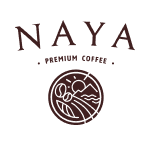For the coffee aficionado or the casual sipper, the allure of a fresh cup of coffee is undeniable. The rich aroma fills the room, and the complex taste profile tantalizes the palate. But have you ever pondered the labyrinthine journey that each coffee bean traverses to get into your cup?
This extended blog post delves deeper into the captivating stages—cultivation, harvesting, processing, roasting, and brewing—that a coffee bean endures. This is the journey of a coffee bean, replete with art, science, and a touch of magic.
Planting the Seed: A Deep Dive into Origins
Selecting the Best Varieties
- Arabica: Offers a wider taste range, between sweeter and more tangy tastes.
- Robusta: Harsher and nuttier flavor profile, ideal for espresso because of its rich crema.
- Liberica and Excelsa: Lesser-known but prized for their unique flavors and profiles.
The Terrain Matters: Soil and Climate
- Soil pH: Acidic to neutral soils are preferred.
- Climate: Tropical climates with no frost are ideal.
- Rainfall: Coffee plants require 60-100 inches of rainfall a year, distributed throughout the year.
Considerations in Planting
- Spacing: Proper distance between the plants is crucial for healthy growth.
- Nursery: Seedlings are often nurtured in a nursery before being transplanted.
Cultivation: Beyond Planting
Organic, Conventional, and Sustainable Farming
- Organic: Emphasizes natural methods and is pesticide-free.
- Conventional: Maximizes yield, sometimes at the cost of long-term soil health.
- Sustainable: Incorporates practices that are both eco-friendly and socially responsible.
Maintenance and Care
- Pruning: Necessary to remove dead or diseased growth.
- Fertilization: Balanced N-P-K (Nitrogen, Phosphorus, Potassium) fertilizers are often applied.
The Harvest: A Critical Phase
The Techniques: Hand-Picking vs. Mechanical
- Selective Picking: Only the ripe cherries are hand-picked.
- Strip Picking: All cherries are stripped off the branch at one time, requiring further sorting.
- Mechanical Harvesting: Efficient but less selective, used mainly in flatter regions.
Timing is Everything
- Early Harvest: Tends to produce beans that are more acidic.
- Late Harvest: Risks over-ripeness, leading to a flat and uninspiring flavor profile.
Processing: The Bridge to Roasting
Honey and Pulped Natural Methods
- Honey: Some mucilage is left on the bean, imparting sweetness.
- Pulped Natural: Mucilage is partially removed, offering a flavor profile between wet and dry methods.
Milling and Storage
- Hulling: Removal of the final layers of dry skin.
- Storage: Beans are stored in sisal or jute bags to mature, improving flavor.
Roasting: A Symphony of Flavor
Roast Profile and Timing
- First Crack: A lighter roast achieved when the beans first crack.
- Second Crack: A darker roast, right before a second, quieter crack.
- Development Time: The span between the first and second crack, crucial for flavor development.
Specialty Roasts
- Single Origin: Beans from one location, offering unique characteristics.
- Blends: Mix of beans from different origins to achieve a specific flavor profile.
Brewing: The Culmination
Water Quality and Temperature
- Soft Water: Ideal for coffee brewing.
- Temperature: 195-205°F for optimal extraction.
Fine-tuning the Brew
- Brew Time: Varies by method; shorter for espresso and longer for French press.
- Coffee-to-Water Ratio: Generally, a 1:15 ratio of coffee to water is recommended, but this can be adjusted to taste.
The Odyssey from Seed to Cup
Every step in the journey of a coffee bean contributes to the experience we relish in each cup. From the selection of the bean variety to the specific nuances of roasting and brewing, coffee is both a science and an art. When you sip your next cup of coffee, may it be imbued with a newfound sense of wonder and appreciation for this remarkable journey.
Here's to a deeper understanding and an enhanced enjoyment of your next cup of coffee! Cheers!




